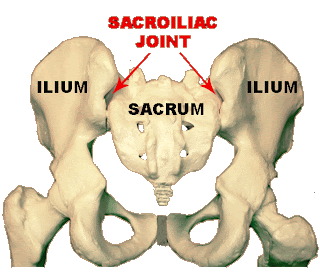Sacrum Pain at A Glance
Are you suffering from sacrum pain? You should be more careful in the handling of your general health. Many people do not care about the symptoms of the disease and do not realize that this disease can be critically dangerous. If you did not care when your disease is easy to treated then it will grow in your body to be chronic and late for a cure. Every disease has its own specific features typical symptoms called symptoms of the disease. Definition of symptoms is the first step in the diagnosis of diseases in general. You just need a few times a year to be screened by a doctor, not only to prevent a terrible disease, but also to maintain a healthy spirit in a body and the organism in general
Sacrum pain can be felt and can be characterized by pain or sharp pain. Usually you feel pain in
the low back or pain in the bottom. Quite literally sacrum pain is often described as a pain in the bottom!.The sacrum is a portion of the lowest part of the spine, which extends into your tailbone. Many muscles attach to the sacrum, and often we work with clients who have pain in their sacral area that is completely related to a chronic postural strain or muscular issue. Some of the muscles that attach to the sacrum, and can cause pressure in that area are the gluteus maximus, otherwise known as your 'cheek muscle', the deep lateral rotators are several muscles under the glutes, plus hamstrings, hip flexors and pelvic floor muscles. If you've had diagnostic images (X-rays, MRI, etc) taken of this area, without any evidence of the cause of your pain, it is very possible that some of these muscles are causing it.
Your sacrum is located at the bottom
of your spine and it is what many people refer to as your tail bone. A lot of
muscle attach into your sacrum including your Gluteus Maximus (your buttocks)
and many smaller and deeper internal rotator muscles such as your Piriformis.
Plus, your pelvis also attaches to abdominal muscles and leg muscles as well.
There is a lot going on in that area of the body.
The Main Causes of Sacrum Pain
- Piriformis syndrome is a neuromuscular disorder that occurs when the sciatic nerve is compressed or otherwise irritated by the piriformis muscle causing pain, tingling and numbness in the buttocks and along the path of the sciatic nerve descending down the lower thigh and into the leg. This presents itself as a very sharp pain in your bottom. The Piriformis can cause sacrum pain either from overuse, such as if you are an athlete and you overtrain your legs, or from underuse, such as if you sit at a desk for 8 hours a day with little physical activity.
- Inflammation. Your body uses
inflammation when it has been injured or exposed to some form of toxin as a way
to prevent further damage to it. Unfortunately, the tissue swelling associated
with inflammation can also put pressure on the nerves in the pelvis and sacrum
area.
- Sacroiliac joint problems is a
joint that connects your sacrum to your hips. Since this joint exists to help
dissipate the stresses involved on balancing the body and the torsion of
movement, pain in this area could be the result of overuse of the joint. Other
potential causes are arthritis or inflammation. Without more information, it is
difficult to determine the exact cause of SI joint pain.
Sacrum Pain Treatment
Required
examination gynecology, urology and neurological, and orthopedic examinations
When you feel pain in the sacrum. The nature of the
spinal lesion installed with the help of x-rays. Treatment is directed at the underlying disease. Sacrum pain can have various causes.The pelvis is a very complicated area of the body with many nerves and muscle Required groups linking together from the upper and lower body. To really understand what the cause of your sacrum pain is and the best treatment option, consult your doctor.
spinal lesion installed with the help of x-rays. Treatment is directed at the underlying disease. Sacrum pain can have various causes.The pelvis is a very complicated area of the body with many nerves and muscle Required groups linking together from the upper and lower body. To really understand what the cause of your sacrum pain is and the best treatment option, consult your doctor.
References :
Symptoms of disease - pain in the sacrum, http://www.md-tips.com/pains/102
( July 15, 2013 )

No comments:
Post a Comment